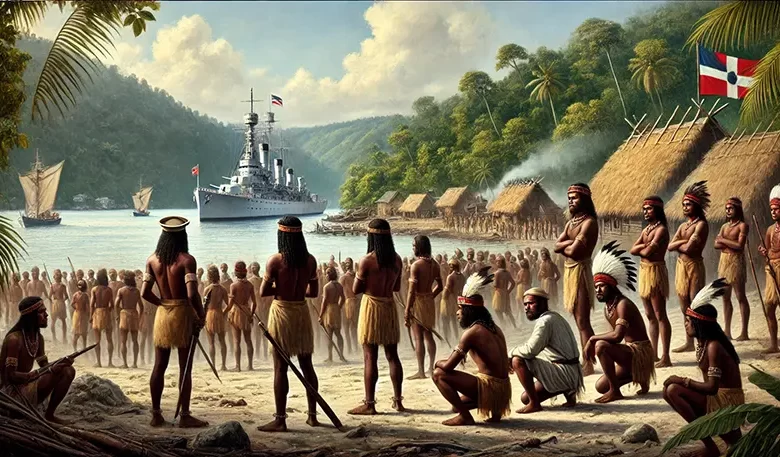Kalinago Uprising

The Kalinago Uprising of 1930, also known as the Carib War, was a pivotal event in Dominica’s history, marking a significant resistance by the Kalinago people against British colonial forces. This uprising occurred in the Kalinago Territory, a 3,700-acre area designated for the indigenous Kalinago people. The conflict was fueled by imposing colonial restrictions on traditional trade practices between the Kalinago and neighbouring French islands like Martinique and Marie-Galante.
Key Events
The uprising was triggered by British attempts to enforce new trade regulations, which the Kalinago perceived as unjust. On September 19, 1930, tensions escalated when colonial officer Edward Carlyon Eliot requested British authorities send armed forces, to which they responded by sending the HMS Delhi to the Carib Reserve to quell the unrest., leading to violent clashes that resulted in casualties on both sides. The Kalinago, led by Kalinago Chief Jolly John, resisted these measures, highlighting their struggle to maintain sovereignty over their lands and way of life.
Impact and Legacy
The Kalinago Uprising is remembered as a symbol of resistance and resilience against colonial oppression. Although the uprising was eventually suppressed, it brought international attention to the plight of the Kalinago people and their ongoing struggle for autonomy. This event is commemorated annually during Kalinago Week, a time for celebrating Kalinago culture and history through various activities and events.
The aftermath of the uprising led to a commission of inquiry, which ultimately resulted in changes to the administration of the Kalinago Territory. The rebellion also played a crucial role in fostering a renewed interest in Kalinago’s cultural identity and in shaping the policies of the Kalinago Council, which continues to advocate for the rights and development of the Kalinago people. The legacy of the Kalinago Uprising underscores the importance of preserving indigenous rights and cultural heritage in Dominica.




